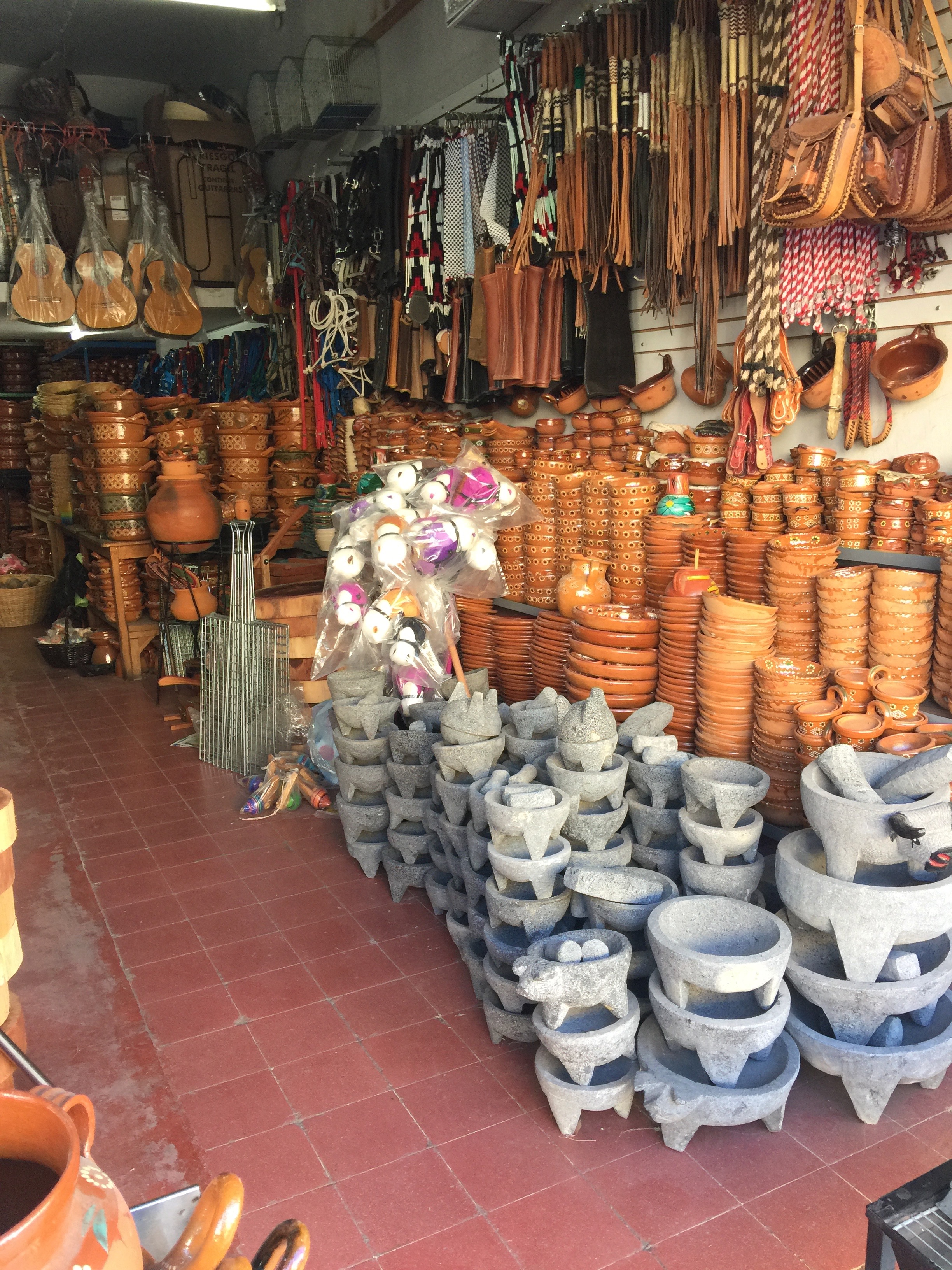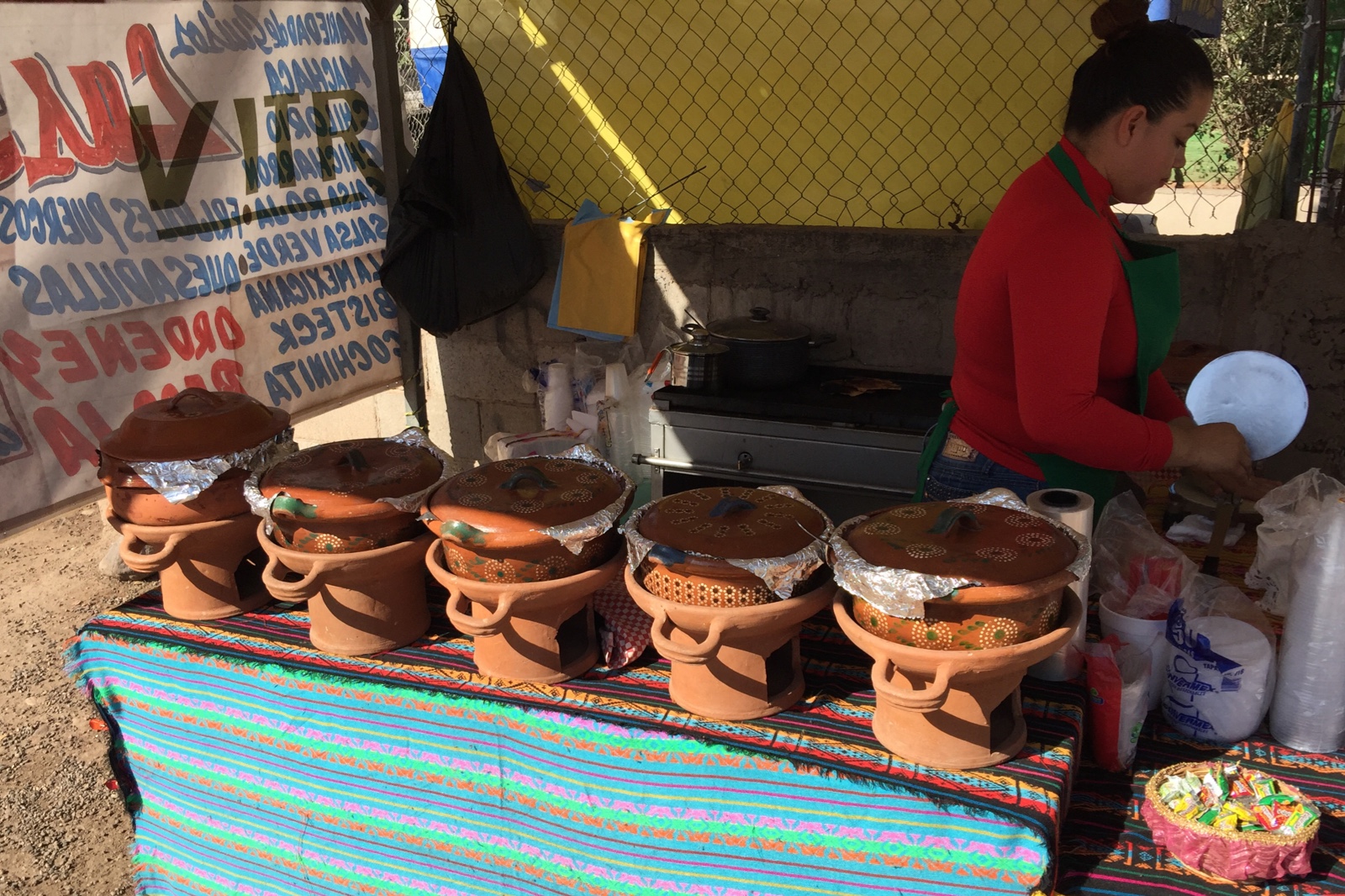| Monthly Tech-Tip | No tracking! No ads! | |
Can terra cotta ware survive an open flame without cracking?
It can if the flame is not too big! This is a roadside stand in Mexico in 2016. Each of these "cazuelas" (casseroles) have a small flame under them to keep the food inside warm. The pedestal is unglazed. The ware is thick and heavy. The casseroles are hand decorated with under-glaze slip colors with a very thin layer of lead glaze painted over (producing a terra sigilatta type appearance, but with brush stroke texture). These have been made and used here for hundreds of years. How can they not crack over an open flame? The flame is small and it is applied in the center of the bottom so that stresses are distributed radially and symmetrically. The ware is fired at what potters in Canada or the US would consider bisque temperature. It is porous, open and able to absorb the stresses. Some of them do have small cracks, but these seem to relieve stresses and prevent more. They know these pieces are not strong, so they treat them with care in heating, handling and washing. They know the glaze will leach lead or even dissolve if they put acidic liquids in them - so they don't do that.
Related Pictures
Is Mexican Terra-cotta pottery lead-glazed? Yes. Does it leach? Yes.

This picture has its own page with more detail, click here to see it.
This piece was bought in Sinaloa in 2020 (made in Puebla). By breaking it and refiring shards I estimate the firing temperature around 1800F. This lead test procedure involves leaving white vinegar in the piece overnight, pouring some of that into a test tube, dipping a cotton swab into a reagent solution and then stirring the vinegar with it. Darkening of the color indicates the concentration of lead in the leachate. It has turned black! Yet a typical fritted lead bisilicate PbO:2SiO2 glaze (having 10-15% clay to suspend it) does not leach lead (when melted well). The very thin glaze application suggests potters were trying to save money (although thin or thick does not make it more reachable). Frits are expensive, so it seems likely they are using white lead powder. But, they are not mixing enough silica to produce a stable lead silicate chemistry (likely because adding silica would require firing at a higher temperature to get a good melt).
Yet this pottery is a tradition in Mexican culture (and elsewhere) and is used for food and liquid surfaces everywhere. Some manufacturers are trying to make stoneware that retains the traditional terra cotta appearance, but many prefer this.
Craft store selling traditional terra cotta ware in Mexico 2020

This picture has its own page with more detail, click here to see it.
This ware is used all over the city by street-side restaurants and food vendors. And routinely used in the house. It is all lead-glazed. That glaze does not craze and thus seals the otherwise porous surface against bacterial growth. They all know to handle it with care to minimize breakage. Surfaces and edges are rough, it is poorly finished but most people value the tradition enough to not even notice. Of course factory-made ware is much stronger and more functional, and cheaper. But at meals and occasions, many seek opportunities to use this at the table and show it off to their friends.
Videos
Links
| Glossary |
Ovenware
Ovenware clay bodies have a low expansion by virtue of materials in their recipe and/or the way they are fired. But potters bend the rules. |
| Glossary |
Flameware
Flameware is ceramic that can withstand sudden temperature changes without cracking. The low thermal expansion of true flameware makes craze-free glazes very difficult. |
| Glossary |
Terra Cotta
A type of red firing pottery. Terra cotta clay is available almost everywhere, it is fired at low temperatures. But quality is deceptively difficult to achieve. |
Got a Question?
Buy me a coffee and we can talk

https://digitalfire.com, All Rights Reserved
Privacy Policy

